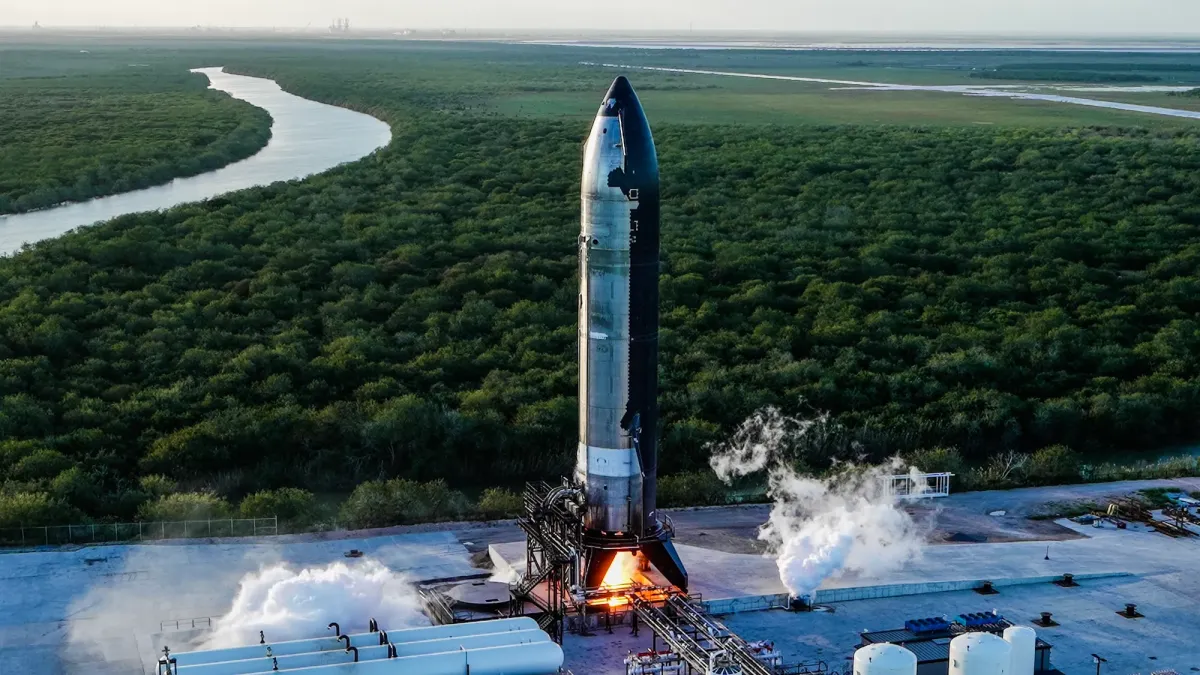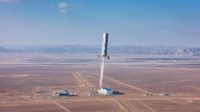SpaceX is preparing for its seventh test flight of the Starship/Super Heavy vehicle, scheduled as soon as January 10, with several key upgrades and the first payload deployment from the spacecraft. The upcoming test flight will feature a new generation of Starship, which includes significant modifications to its design and performance.
In a statement released on January 3, SpaceX outlined the objectives for the flight, including the first deployment of Starship's payloads, as well as multiple reentry experiments and a mission to launch and return the Super Heavy booster. “The upcoming flight test will launch a new generation ship with significant upgrades, attempt Starship's first payload deployment test, fly multiple reentry experiments geared towards ship catch and reuse, and launch and return the Super Heavy booster,” the company stated.
Key upgrades to the Starship include a redesigned forward flap design aimed at reducing heat during reentry, along with expanded propellant tanks that offer a 25% increase in volume over the previous version. Additionally, the vehicle will feature a complete overhaul of its avionics system, incorporating new computers, antennas, and a power distribution system.
Other changes to the vehicle's thermal protection system will include the use of next-generation tiles and additional protective layers in case of damage. Some tiles will be intentionally removed for stress testing, and the vehicle will also trial some metallic tile options, with water cooling incorporated into some designs. These modifications are intended to support SpaceX's future goal of landing the Starship upper stage back at the launch site.
For this mission, the Super Heavy booster will be the first to use previously flown hardware, including a Raptor engine that was first tested on the fifth Starship/Super Heavy test flight in October. SpaceX successfully returned and “caught” the booster during that flight, and the company plans to attempt another catch during the upcoming launch.
The Starship upper stage will perform a suborbital flight with a splashdown in the Indian Ocean. A major highlight of the flight will be Starship's first payload deployment, which involves releasing 10 “Starlink simulators” that are similar in size and mass to the next-generation Starlink satellites. These simulators will not remain in orbit and will reenter Earth's atmosphere on suborbital trajectories.
The successful deployment of V3 Starlink satellites will be a key objective once Starship begins orbital flights. These next-generation satellites, weighing about two tons each, are designed specifically for Starship and are expected to revolutionize global connectivity. “With unparalleled payload capacity and full reusability, Starship will be able to deploy our more advanced V3 Starlink satellites, revolutionizing global connectivity,” SpaceX stated in its 2024 Progress Report on Starlink.
The V3 satellites will have significantly improved capabilities, including one terabit per second of downlink capacity—10 times that of the current V2 Mini satellites—and 160 gigabits per second of uplink capacity, 24 times that of V2 Mini satellites. Each V3 satellite will also feature nearly four terabits per second of backhaul capacity, using both radiofrequency and laser links.
SpaceX did not provide a specific launch date for the upcoming test flight, but airspace restrictions have been announced for potential launch opportunities from January 10 to January 16. The launches are scheduled to take place in the late afternoon, with a morning launch window available on January 11.







